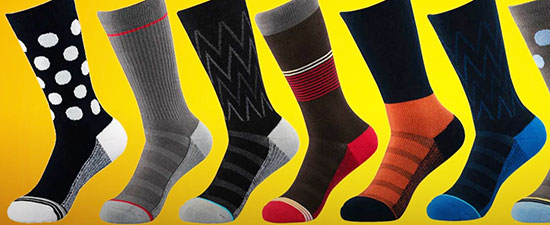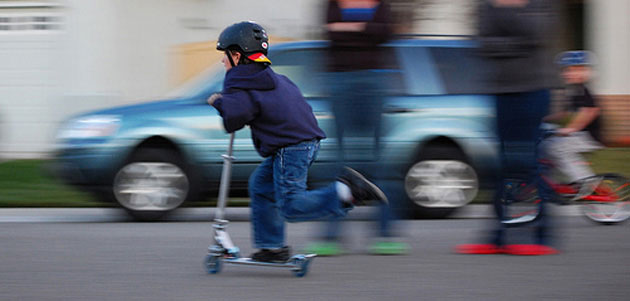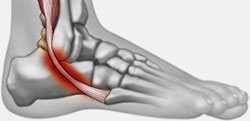- Home
- Foot & Ankle Conditions
- Less Common Conditions
- Peroneal Tendon Injuries
Peroneal Tendon Tear and Dysfunction
In this video, we discuss peroneal tendon injuries and their treatment options.
It can be difficult to distinguish one ankle injury from another. Thankfully, our foot and ankle specialists and orthopedic surgeons are trained trauma experts and have decades of extensive experience in treating ankle tendon injuries, including peroneal tendon injuries. In fact, University Foot & Ankle Institute’s foot and ankle specialists often teach our peroneal tendon repair techniques to other doctors and clinics.
A peroneal tendon tear is when one or both of the bands of tissue in your ankle — the peroneal brevis and peroneal longus — tear as a result of injury or overuse. There are a few different types of tears, and each can vary in level of severity, making it important to receive adequate diagnosis and proper treatment.
- Previous
- Condition
-
Foot and Ankle Surgeon at University Foot and Ankle Institute
Dr. Abimbola Johnson completed his undergraduate degree at Loyola University Chicago, where he played Division II rugby and was also involved in social justice clubs aimed at helping younger students prepare for college.
Upon graduation, he entered Scholl College of Podiatric Medicine, where he served as president of the practice management club and volunteered as coordinator at the Free Foot Clinic in Chicago. He served his residency at Regions Hospital/Health Partners in St. Paul.
Dr. Johnson provides comprehensive medical and surgical care for a wide spectrum of foot and ankle conditions, including common and complex disorders and injuries. The doctor is uniquely qualified to detect the early stages of disease that exhibit warning signs in the lower extremities, such as diabetes, arthritis, and cardiovascular disease.
Dr. Johnson can be seen at our Santa Barbara location
 I received great service from the staff, and the surgery was very convenient and professional . Dr Bob (Baravian) did an amazin...Marianne F.
I received great service from the staff, and the surgery was very convenient and professional . Dr Bob (Baravian) did an amazin...Marianne F. Great experience. Great communication. Great direction for my care. Very happy I chose to go with this particular doctor and o...Christopher R.
Great experience. Great communication. Great direction for my care. Very happy I chose to go with this particular doctor and o...Christopher R. Great service and care. Highly recommend Dr. Franson.David B.
Great service and care. Highly recommend Dr. Franson.David B. If you have to go see a Doctor than this is a great experience.Frank M.
If you have to go see a Doctor than this is a great experience.Frank M. My doctor was great. Really greatRudolph B.
My doctor was great. Really greatRudolph B. No doubt the best staff and doctors!Cesar N.
No doubt the best staff and doctors!Cesar N. This operation runs like a well oiled machine! Every aspect has been smooth and easy. Doctor Baravarian has been awesome and ve...Carol M.
This operation runs like a well oiled machine! Every aspect has been smooth and easy. Doctor Baravarian has been awesome and ve...Carol M. Good.David E.
Good.David E. Your Santa Barbara office and Dr. Johnson always give me excellent care!Jayne A.
Your Santa Barbara office and Dr. Johnson always give me excellent care!Jayne A. Dr. Gina Nalbadian was amazing!! I came in with an emergency foot situation and she had wonderful bedside manner and resolved m...Danielle C.
Dr. Gina Nalbadian was amazing!! I came in with an emergency foot situation and she had wonderful bedside manner and resolved m...Danielle C. I was frustrated that after 3 weeks I still hadn’t heard back about my PT referral status. And I did sit in a room for over 30 ...Sarah C.
I was frustrated that after 3 weeks I still hadn’t heard back about my PT referral status. And I did sit in a room for over 30 ...Sarah C. I’m very pleased with Dr. Kelman.Alan S.
I’m very pleased with Dr. Kelman.Alan S.
-
 Listen Now
Can Plantar Fasciitis Socks Relieve Foot Pain?
Read More
Listen Now
Can Plantar Fasciitis Socks Relieve Foot Pain?
Read More
-
 Listen Now
What's Plantar Tendonitis and Why is it Still a "Medical Mystery"?
Read More
Listen Now
What's Plantar Tendonitis and Why is it Still a "Medical Mystery"?
Read More
-
 Listen Now
Common Prescriptions and OTC Medications That Affect Your Feet and Certain Foot and Ankle Conditions
Read More
Listen Now
Common Prescriptions and OTC Medications That Affect Your Feet and Certain Foot and Ankle Conditions
Read More
-
 FDA Warns of Serious Risks from Antibiotics to Tendons, Muscle & Joints
Read More
FDA Warns of Serious Risks from Antibiotics to Tendons, Muscle & Joints
Read More
-
 Listen Now
Toy Scooter Related Injuries: what you need to you know
Read More
Listen Now
Toy Scooter Related Injuries: what you need to you know
Read More
-
 Listen Now
Have Heel and Knee Pain? It Could Be the Way You Walk
Read More
Listen Now
Have Heel and Knee Pain? It Could Be the Way You Walk
Read More








